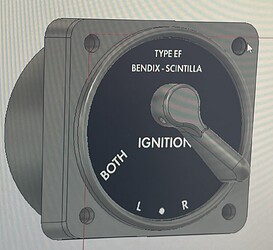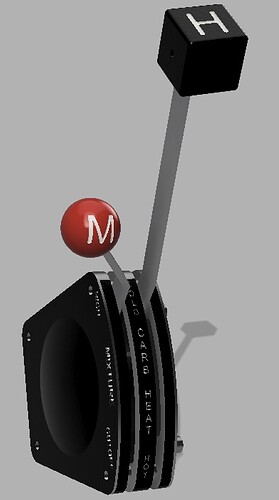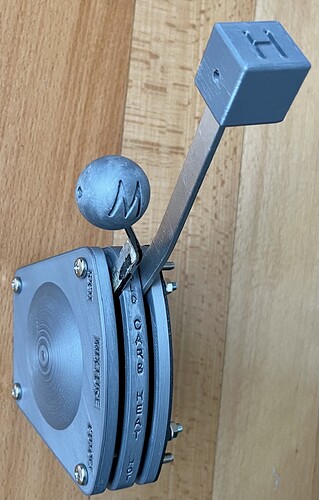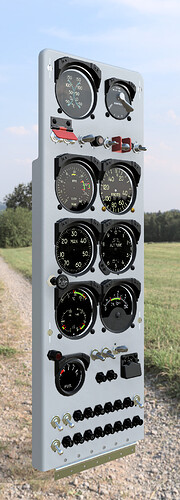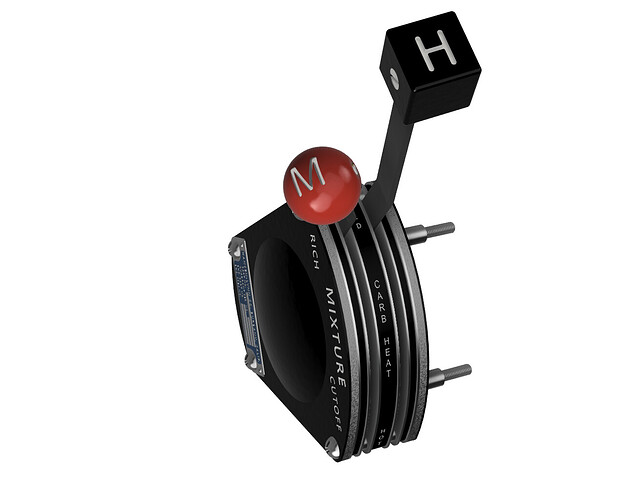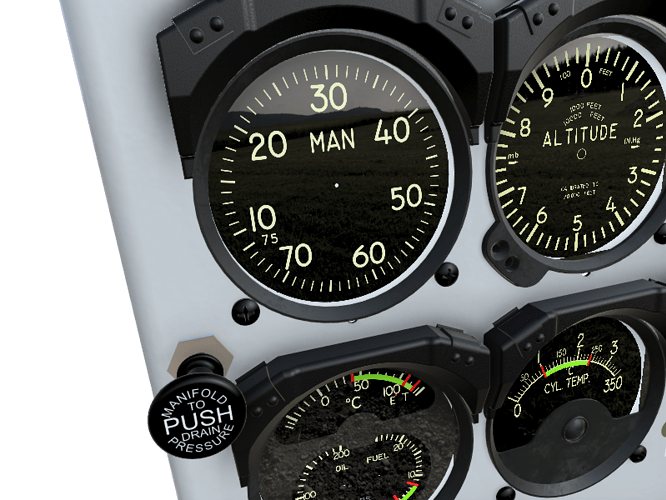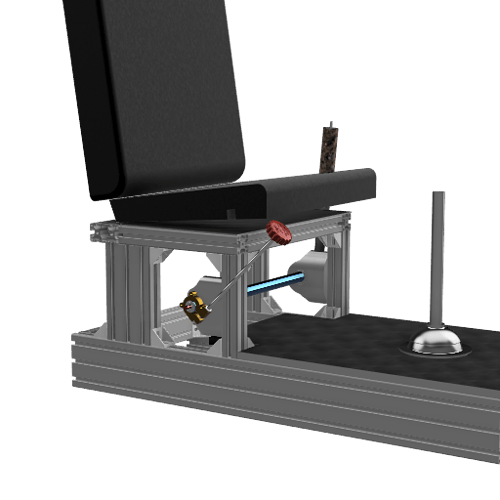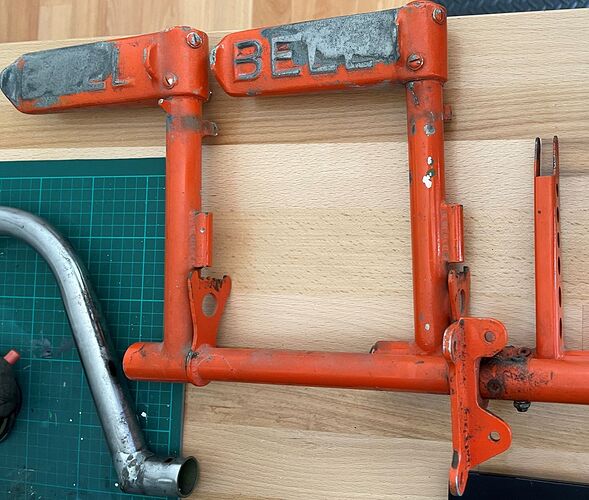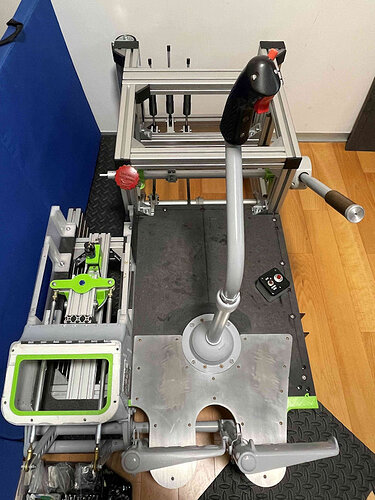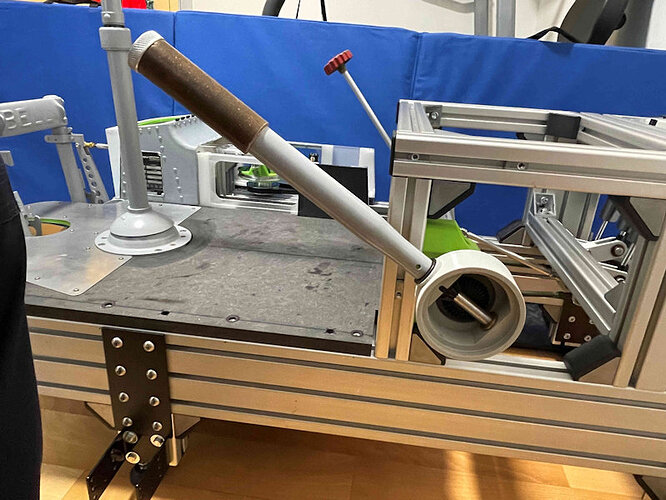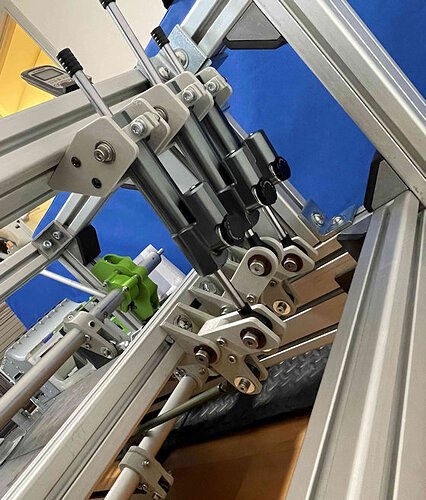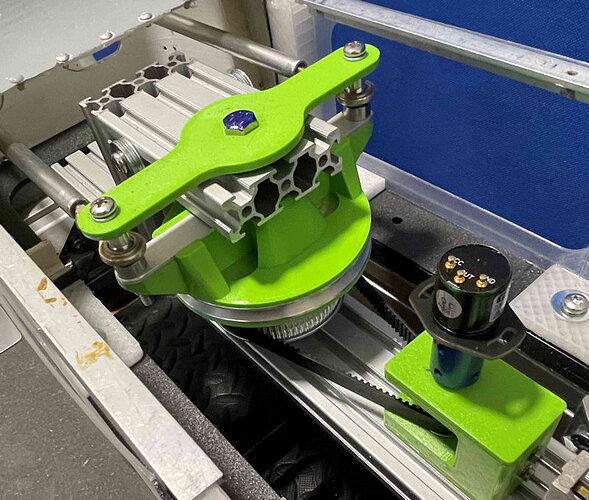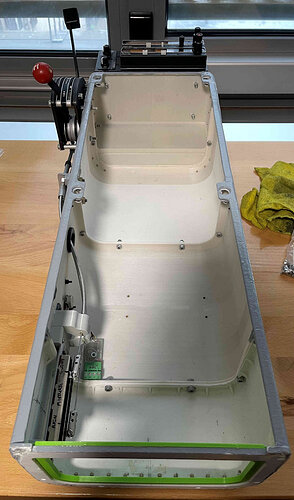A few more photos of developments…
The 40 series frame, 16mm MDF floor. Additional frame to support the pedestal and centre tunnel.
Side On with friction shaft and pedestal base visible in the background.
Close up of throttle gears inside collective bell housing.
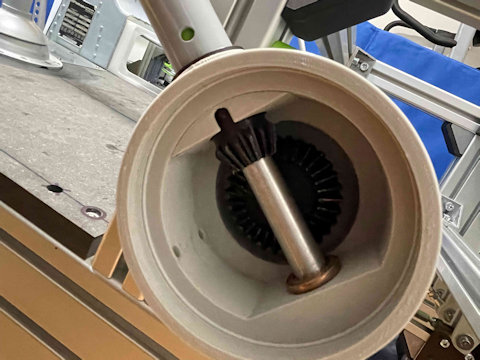
As mentioned in previous post, I’m using motorcycle steering dampers to provide some resistance on the collective and cyclic controls. I have replicated the same linkage setup found in the real aircraft to also to give a more realistic feel. I intend to add a wire rope loop connecting to a rotating drum to add an additional bit of resistance and hopefully a more authentic feel to the pedals. You can just see the cutout on the collective shaft for the throttle linkage. There is an inner shaft connecting to the large gear in the bell housing. This will be connected via an additional shaft and then to my interpretation of a Bell 47 cambox and then to an additional hall sensor.
You can see all the linkages in this render from the cad model. I didn’t feel like lifting the sim up on its wheels to take a photo! It’s designed that with the pedestal and cyclic removed along with the seat folded, it can be transported and moved through normal doorways.
This is the same gearing I used on my 206 build with HTD3M belts and pulleys connecting to a hall effect rotary sensor. There will be a mount that will secure the Hall sensor above the small pulley carriage. The carriage slides on the 20 series rail and is tensioned using two M3 bolts.
You should be able to make out the routing of the push pull cables from the mixture/carb heat quadrant. They are routed through the side of the pedestal and then are connected to a sliding potentiometer board.
The cables are visible here along with the quadrant, instrument dimmer control and radio tray. The smaller box is the audio panel.
These are the radios I settled on. As yet they are not functional as I need to sit down with mobiflight and connect it all up.
Designing all these parts from scratch has taken quite some time. I am very happy with the overall look of all the component parts and I am determined to get them all together and working soon.
The instrument panel itself has been emptied of all gauges as I’m doing a few more revisions on the gauges and also the mounting set up for the arduinos.
I am hoping to have the flight controls fully functional in a few weeks. The panel will follow a while after that once I have some new parts.
I’ll follow up soon with some more information.
Cheers,
Stuart 

